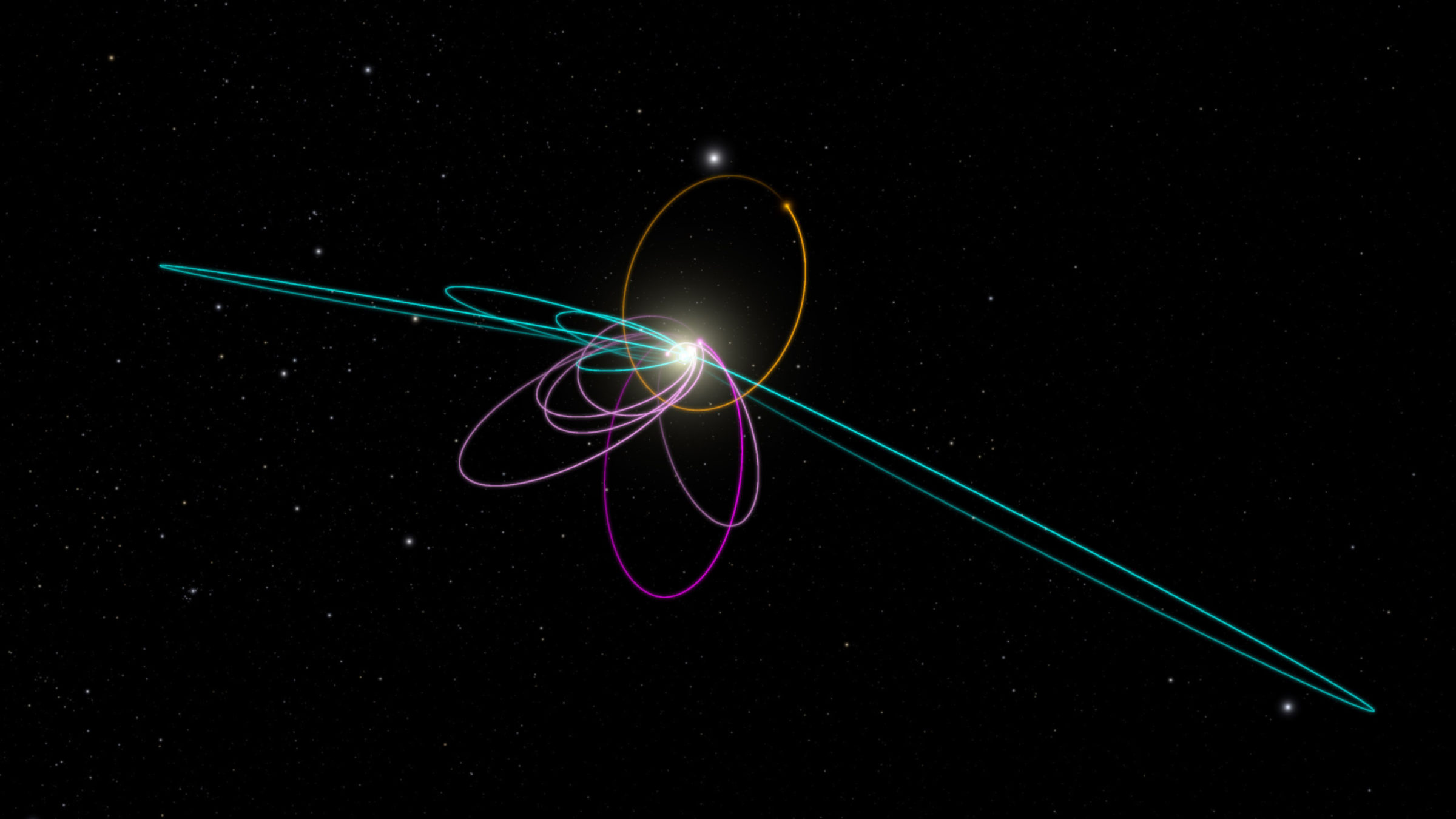Emily Lakdawalla • Mar 08, 2016
"Planet Nine" update: Possible resonances beyond the Kuiper belt?
When Konstantin Batygin and Mike Brown announced the possible existence of a distant planet, my first question was "what do the dynamicists think?" Several were quoted in the media surrounding the announcement, but yesterday leading dynamicist Renu Malhotra (with coauthors Kat Volk and Xianyu Wang) posted to ArXiv the first formal response I've seen. In brief, Malhotra and coauthors are on board with the idea of a possible outer planet, and found that it may have shaped the orbits of extremely distant Kuiper belt objects in another way beyond the several ways that Batygin and Brown proposed.
Before I continue with the story, I want to mention that you can hear from Batygin and Brown directly tonight through a Planetary Radio Live webcast! I'll be onstage as well.

In the paper, Malhotra points out that because the orbits of the extremely distant Kuiper belt objects like Sedna, 2010 GB174, 2004 VN112, 2012 VP113, and 2013 GP136 are so eccentric, then they are likely to have had close encounters with the putative planet. Close encounters with a massive planet change orbits of smaller worlds. It's relatively easy for small worlds, so tenuously connected to the Sun, to get ejected from the solar system entirely. If there is an undiscovered distant planet affecting their orbits, the fact that the little worlds still remain in our solar system means either that they've had relatively few encounters, or else they're protected from close encounters with the planet by being in resonances. This is how Pluto is still a member of our solar system even though its orbit crosses Neptune's: because Pluto orbits the Sun twice for every three times Neptune does, Pluto and Neptune are never actually close to each other, so Neptune doesn't get a chance to eject Pluto.
Armed with this hypothesis, Malhotra, Volk, and Wang investigated whether the worlds we know about could be in resonances with the one that Batygin and Brown suggested. In short, they can. It's complicated because we have short observational arcs on these distant, slow-moving worlds, so the analysis has to include a detailed understanding of the uncertainties on the worlds' orbits. The analysis suggests that Sedna's orbital period is in a 3:2 resonance with the putative planet; 2010 GB174 in a 5:2; 2994 VN112 in a 3:1 resonance; 2004 VP113 in 4:1; and 2013 GP136 in 9:1.
If all this is true (and I should note here that the paper has not been peer-reviewed yet), Malhotra et al.'s work constrains the mass and location of the possible planet in different ways than Batygin and Brown's does. In this new paper, in order to keep the smaller worlds corralled into resonant orbits, the possible planet has to have a mass of at least 10 times that of Earth. The orbital plane can be one of two: either inclined at 18 degrees or 48 degrees. In the low-inclination case, the orbit eccentricity would be less than 0.18; in the high-inclination case, it could be much larger. There are many places along the possible orbits that the putative planet could not be, or else it would have close encounters with the discovered worlds.
Is this proof for a ninth planet? No. From their conclusion:
Our analysis supports the distant planet hypothesis, but should not be considered definitive proof of its existence. The orbital period ratios have significant uncertainties, so the near-coincidences with N/1 and N/2 ratios may simply be by chance for a small number of bodies. The long orbital timescales in this region of the outer solar system may allow formally unstable orbits to persist for very long times, possibly even to the age of the solar system, depending on the planet mass; if so, this would weaken the argument for a resonant planet orbit. It would be pertinent to examine this question quantitatively in future work.
More work is always needed -- but this work is cool because it suggests new constraints on where to look for the possible undiscovered world.
Support our core enterprises
Your support powers our mission to explore worlds, find life, and defend Earth. You make all the difference when you make a gift. Give today!
Donate

 Explore Worlds
Explore Worlds Find Life
Find Life Defend Earth
Defend Earth

